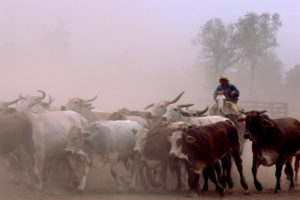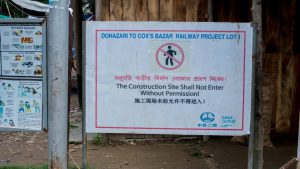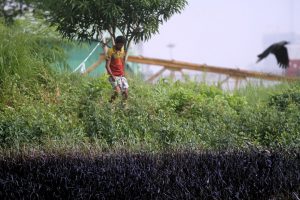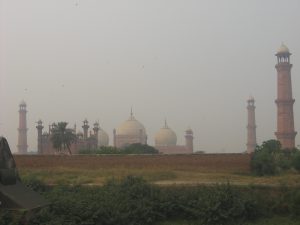When anyone utters ‘Kali Gandaki’ around Malunga Bazaar in the Syangja district of western Nepal, the entire settlement is drawn in. Men in their twenties rush to the person uttering the words; busy shopkeepers ask assistants to take over so they can attend to the discussion on Kali Gandaki.
The Kali Gandaki, a 300 kilometre-long perennial river that originates from Mustang in the trans-Himalayan region of Nepal’s Gandaki province and joins the Gandak in India, provides water for thousands of people in four districts of Nepal.
The river, famous for its ‘saligrams’ (the fossilised remains of extinct sea molluscs), has earned a reputation as one of the first cases to test Nepal’s delegation of power to its provinces. This is a test for the new federal system’s capacity to deal with disputes related to natural resources such as water. While there was fear that provincial governments would fight over water, the Kali Gandaki case has brought politicians at all levels – the centre, the provinces, and the local governments – into the fight.
Every other resident of Malunga knows about the central government’s plans for the river. “The plan, as we know it, is to build a 30 km tunnel here and divert the water towards the Tinau in Province 5,” says Bijay Aryal, a local resident pointing at a hillock on the banks of the Kali Gandaki.
“We don’t know for sure how much water will flow downstream after the project is implemented as the government has not consulted local people about the inter-basin water transfer project. We get our information from the media.”
A master plan for the river
According to the draft National Irrigation Master Plan, the Kali Gandaki-Tinau diversion is one of the 11 river diversion projects planned to couple perennial rivers with fertile land which is under-utilised due to a lack of water around the year.
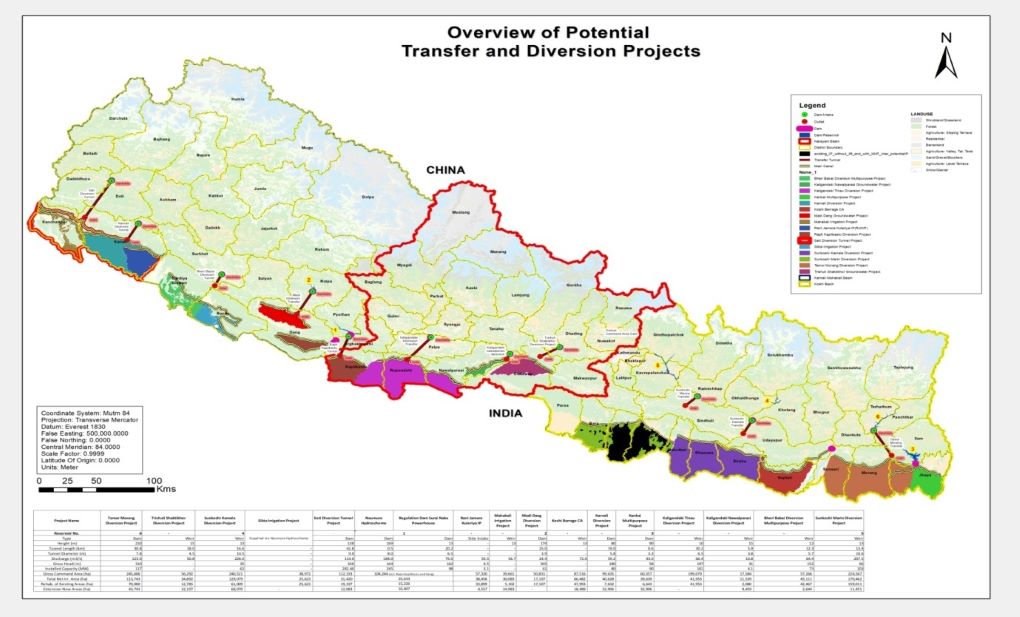
Under the Kali Gandaki-Tinau diversion scheme, the government plans to build a tunnel near Ramdighat in the Palpa district of Province 5. The master plan says that the project — which comes with a price tag of NPR 40 billion (USD 350 million) and is set to produce 101 MW of electricity — needs to be completed by 2037.
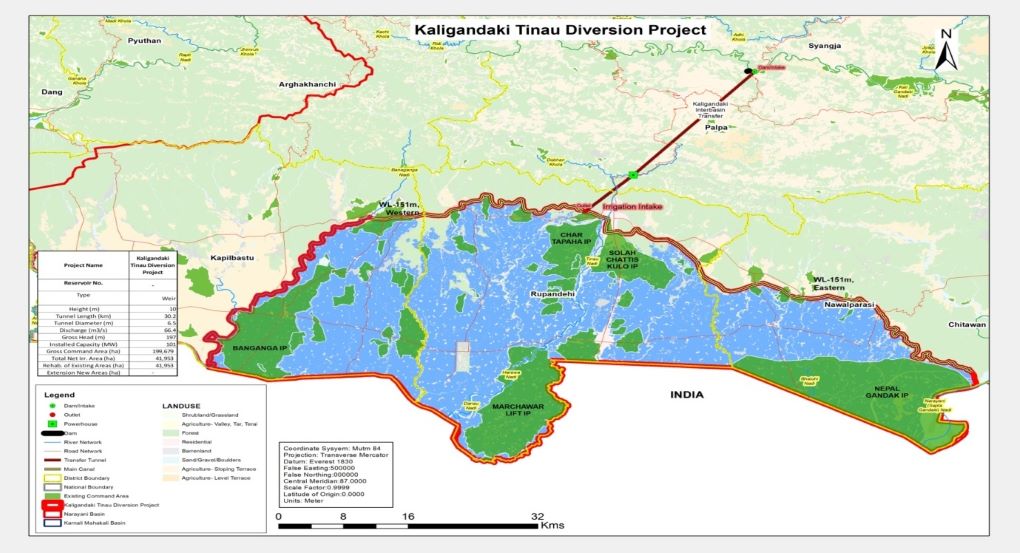
The idea of large water transfer projects in Nepal dates back to the 1970s when the government commissioned a study to explore the Babai Irrigation Project to irrigate fertile land on the western plains of Nepal during the non-monsoon period.
However, the project, which transformed into the Bheri-Babai Diversion project, was put on hold until 2009 when the interim plan (2010-2013) revived it. Construction began only in 2015.
While the Kali Gandaki-Tinau diversion project had been discussed within the department of irrigation for a long time, it gained prominence after it was included in the Three Year Plan Approach Paper (2010/11 – 2012/13) and in the government budget speech by then Finance Minister Ram Sharan Mahat from the Nepali Congress Party (the principal Opposition Party) in 2014. The draft National Irrigation Master Plan, which proposes various modes of irrigation (groundwater, lifting, and river diversions) also includes the project.
Political support — and dissent
The general secretary of the Nepal Communist Party (the governing party) and former finance minister Bishnu Paudel, who succeeded Mahat, has been the most ardent supporter of the project. Paudel, an ally of the Nepali Prime Minister KP Sharma Oli, announced in his budget speech that the Kali Gandaki, which serves as a border between Province 5 and Gandaki Province (Province 4), shall be diverted to feed the Tinau River and irrigate fertile land in Rupandehi, his parliamentary constituency.
After the announcement, whenever Paudel visited his constituency, he reminded the people that the Kali Gandaki would soon join the Tinau and irrigation would be easier in the days to come. All of this happens in the backdrop of the silence of the Province 5 Chief Minister and NCP leader Shanker Pokhrel.
But the chief minister of the Gandaki province Prithvi Subba Gurung is not impressed. Gurung, who is also considered a member of the Oli coterie, has been saying that the Kali Gandaki cannot be diverted.
During a recent interview with Onlinekhabar, Gurung said that he will not change his stance on the issue. “No, you cannot divert the Kali Gandaki. The centre cannot impose a decision on the province as almost all of the river flows through Gandaki Province,” says Gurung.
He added that the river now belongs to provinces 4 (Gandaki) and 5 and that the flow of the river cannot be changed without the consent of the two provinces. Gurung said that a sizable area downstream in Tanahun, Syangja and Nawalpur will turn into a desert if water is diverted into the Tinau.
Local concerns
With reports that the government plans to complete the Detailed Project Report this year, locals have started counting the problems the diversion will bring. Bishnu Bhandari, the chair of Rambha Rural Municipality (Province 5) said his village sides with the Gandaki Province on the issue.
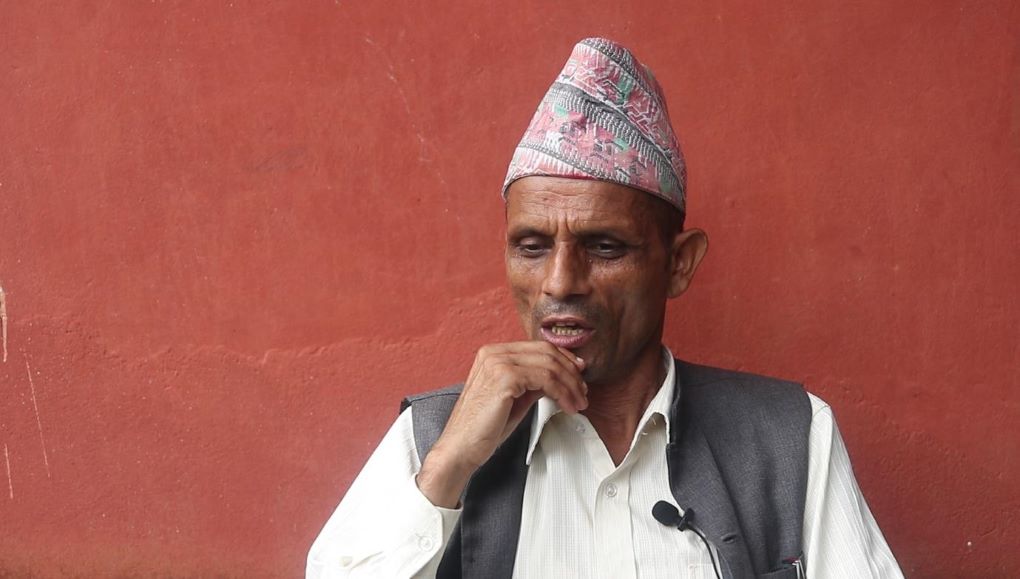
“We also oppose the diversion because we plan to develop numerous lift-based irrigation and drinking water projects in the area in the future; we can’t do that if the water is diverted to the Tinau,” said Bhandari.
“Rambha Rural Municipality plans to start rafting programmes on the river to attract tourists. We can’t do it if the water is diverted,” he added.
Tinau troubles
It is not just the people living on the banks of the Kali Gandaki who are concerned about the diversion project. The Tinau, which originates in the Lesser Himalaya (the Mahabharata Range), is not snow-fed. This means that during the late winter, spring and summer, the river goes into hibernation mode and is resuscitated during the monsoons. A 2016 study ‘Disaster Risk Management and Meso-Level Institutions in Nepal: A Case Study of Floods in Tinau River in Western Terai’ shows that when the river is flooded, it affects a significant population in the area as it enters the Terai crossing the Churia hills, where dense squatter settlements have sprung up near Butwal.
“As the government plans for inter-basin water transfer (IBWT) from snow-fed Kali Gandaki River into Tinau, the problem (flooding) will become even more serious when the project materialises,” says the study. It notes that recent episodes of floods in the Tinau have impacted both urban and rural settlements, agriculture and the health of the population.
“In addition to that, the banks of the Tinau are urbanising at a rapid rate. Butwal is booming and so is Rupandehi. The trend will continue after the second international airport in Bhairahawa comes into operation,” said former MP Shyam Prasad Pandey, who has been campaigning against the project.
Paudel’s new proposition
When asked about the diversion, Paudel is adamant that the diversion will be built. “We will find an amicable solution to the problem and build the diversion,” he said.
Until recently, Paudel, kept his new ‘plan’ to himself, but in an interview with the BBC, he said that a high-dam could be built in the diversion area to collect water during the monsoon. He said that the dam would ensure that people downstream continue to receive water during the lean period and 2,500 MW of electricity could be generated at the same time. The draft Irrigation Master Plan, however, does not mention anything about the dam.
Experts are already comparing the 30 kilometre tunnel to the 27.5 kilometre tunnel of the controversial Melamchi diversion drinking water project, which has missed several deadlines and spiralled out of control in terms of budget. Paudel’s proposal to build a high dam in the seismically fragile area is likely to raise more controversy rather than settle the dispute.
The Indian angle
Paudel’s critics argue that he is bent on developing the project not just for votes, but also to support the Indian agenda of transferring water from perennial rivers in the eastern part of the sub-continent to the water-deficient part of western India under its inter-linking project. Paudel denies these claims.
Although India has remained silent on the issue so far, if the diversion is developed according to current plans, it is likely to involve the Gandak treaty between the two countries. The treaty, revised in 1959, gives Nepal the right to withdraw upstream water and use it for irrigation or other purposes. However it does not allow big transfers in the pre-monsoon months of February, March and April (the period when water is needed the most for irrigation in the planned command area as well) without a separate agreement. But authorities believe that the controversial Budhi Gandaki reservoir in Dhading could help maintain the flow of the Gandak in the lean months. That project, too, is uncertain after the withdrawal of the Chinese contractor.
Dispute settlement
According to Nepal’s Constitution, there are three possible ways to settle disputes related to use of resources. While the Supreme Court can look into disputes related to the rights of the provinces, the National Natural Resources and Fiscal Commission can also study the dispute and facilitate a settlement. Additionally, the inter-provincial council can also discuss such issues to reach a solution. “However, this dispute is likely to be settled by Prime Minister Oli himself as it involves his key allies Paudel and Gurung,” said an NCP analyst. “The two leaders know this well.”
Meanwhile, Nepalis across the country are keeping a close eye on how the Kali Gandaki project goes. There are nine more river diversion projects planned — and possibly much more conflict if this test case is not resolved amicably.
![<p>A paddy field on the banks of the Kali Gandaki in Malunga [image by: Abhaya Raj Joshi]</p>](https://dialogue.earth/content/uploads/2019/11/G1-1.jpg)


